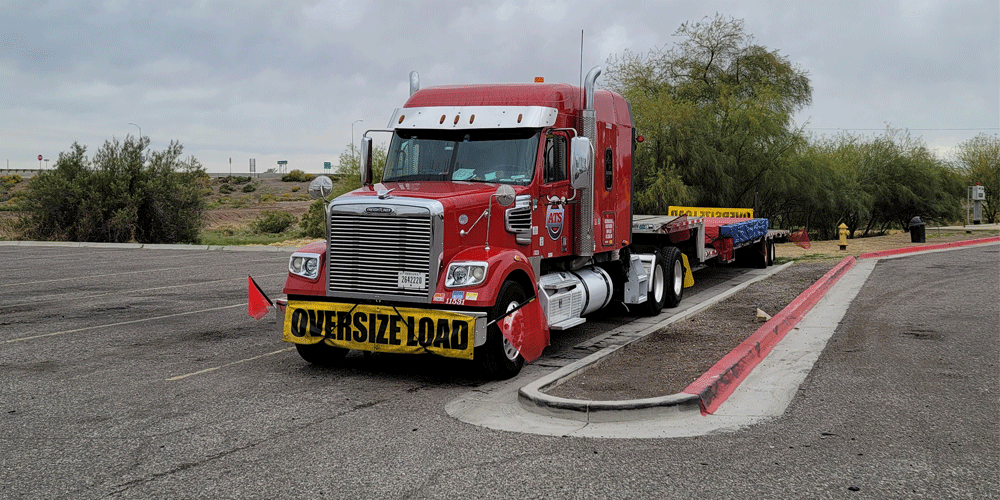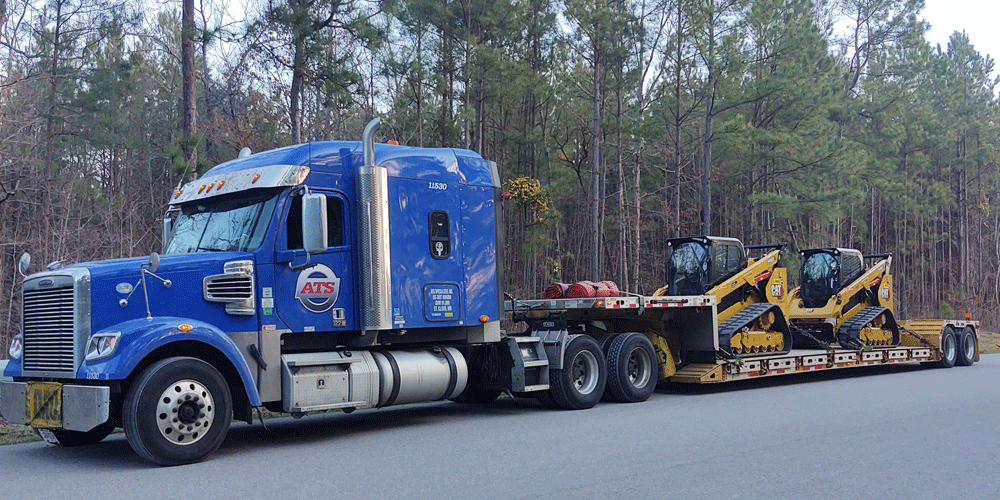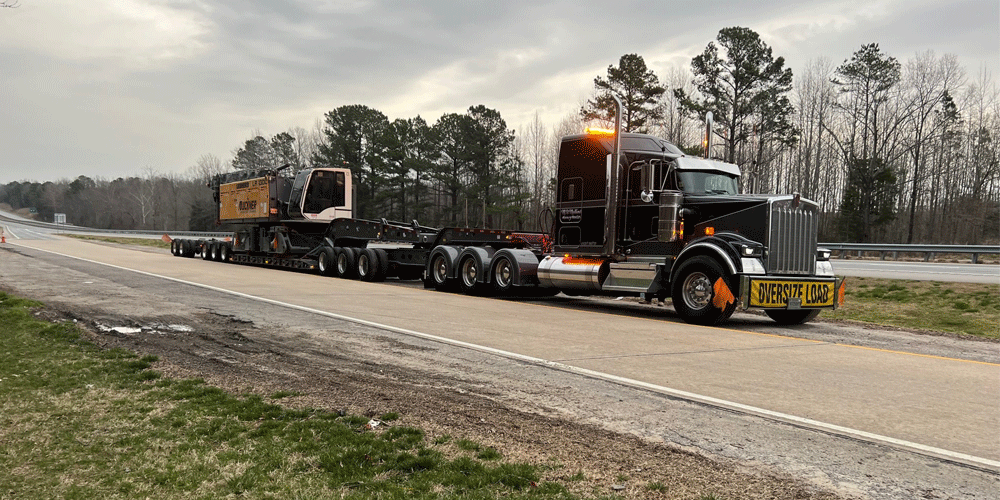Moving More Loads as an OTR Independent Contractor: 5 Tips
Ryan has been with ATS since February 2019. He began in operations support and soon became a driver manager in the vans division. He dispatches a fleet of 45+ drivers that all lease their trucks. He loves building relationships with his drivers and helping them to be as safe and efficient as possible to make their businesses succeed.
Do you feel like you’re always waiting for your next load? Does it seem like, more often than not, you’re waiting for the perfect load and the perfect load never comes?
Your income as an independent contractor truck driver is directly related to how much freight you move, so if you’re going home all the time, you’re deadheading frequently or you’re often waiting for the best load, you’re going to see a dip in your income.
Maybe you’re not sure how to get the best loads and improve your efficiency. Maybe you’re set in your ways and you don’t realize how some of your habits can be impacting your ability to deliver freight on time.
I’m a driver manager here at Anderson Trucking Service (ATS) and one of my jobs is to make sure that I’m helping my drivers succeed. That means giving them the tools for success, offering up great-paying loads and advising them on how to choose the best loads.
If you feel like you’re sitting on your hands and waiting for your next load or always getting a low-paying load because you were waiting on the perfect load, this blog will teach you how to be more efficient with your time as an over-the-road (OTR) independent contractor and increase your income.
When you finish reading, you’ll have clear strategies to maximize your efficiency and move more freight.
5 Tips to Increase Your Efficiency and Move More Loads
When you follow these five tips, you’ll increase your load capacity and boost your income.
1. Don’t Box Yourself In
If you are incredibly picky about the loads you haul, you may box yourself in.
If you refuse to take loads that will bring you into a specific area of the country or you won’t take a certain type of load, you may limit yourself. You might not particularly like driving in New York, but it could be worth hauling if it has a great payout.
If you reject a lot of loads or are particularly selective, your driver manager or dispatcher may struggle to find you loads to make you successful. You may end up either taking lower-paying loads or waiting for a load to come around.
Ideally, if you’ve found the right company, you should have a strong relationship with your driver manager and trust them and the load offers they’re sending you. (If not, you may need to reconsider the company you’re working for or whether you’re working with the best driver manager for you.)
Every load won’t be perfect. But the more willing you are to haul different types of freight and to travel to different areas, the more opportunities you’ll have.
The same goes for freight rates. If you’re always waiting around for a certain cents-per-mile (CPM) payout but market rates just aren’t there, you may be disappointed.
2. Stay Out On the Road
Downtime is lost revenue.
While every OTR driver needs their downtime to unwind and visit their families, you have to be mindful about how long you stay home. For instance, going home every single weekend can cut into your income, as can staying home regularly for weeks at a time.
You’re also likely to see a decrease in income if you’re consistently trying to find loads that take you through the house. The chance to run through the house on the way to deliver a load is appealing, but you may limit your opportunities if you only accept load offers close to home.
Before you go home, take some time to plan how long you can afford to stay at the house. Think about how much revenue you have coming in and how much you have in savings. How long can you afford to stay at the house?
3. Carefully Review Each Load Offer
As an independent contractor, you’ll most likely receive a few different load options from your dispatcher. Each load should be chosen to help you succeed, but sometimes dispatchers miss things.
It’s your responsibility to carefully review your load offers and choose the best one that also fits into your Hours of Service (HOS).
Try to choose the load that provides the most bang for your buck. The longest line haul might not always make you the most money. Pay attention to the CPM of each load. A shorter line haul with a higher CPM not only means that you use less fuel, but it could offer a bigger payout. Make sure you consider this carefully with your dispatcher.
Ask them what their load offerings are to get out of a specific area as well. For instance, there may be a lower payout on one load, but they can get you a great-paying load afterward. Think big picture.
Additionally, your dispatcher may present you with loads where you might have to deadhead, but it may offer a bigger payout than a load with virtually no deadhead time.
Make sure when you accept a load that you’re considering if you can run the load and deliver on time. Compare it to your HOS availability.
Be sure you always talk to your driver manager or dispatcher before you think of rejecting a load. They may have put you on a lower-paying load because they have a great load that’ll get you out of that area afterward.
4. Trip Plan and Maximize Your Hours of Service
Perhaps the number one rule when it comes to maximizing your efficiency on the road is to trip plan and maximize your HOS. In order to move more freight, it’s crucial for you to utilize your clock and be willing to put the work in.
Trip planning and keeping a close watch on your HOS will help you make the most of your time. When you don’t utilize your clock to the best of your ability, it’s going to hurt you at the end of the week, which adds up to a significant amount of time at the end of the month. Your clock is your most valuable asset and it can hold you against the wall from a revenue standpoint.
If you can run your full clock for the day, take your 10-hour break and get enough rest so you’re ready for the next day, you can keep rolling forward and increase the amount of freight you’re hauling each week. When you only drive eight or nine hours each day instead of using up your full 11-hour drive clock, that lost time adds up.
That extra two hours of sleep might be nice every morning — and sometimes you really do need it — but if you make it a habit, you also need to understand that your wallet is going to see a hit. Two extra hours of sleep every day can add up to an extra load each week.
That’s maybe another 500 miles you could be running that week. If the load is paying $2.00 per mile, that’s $1,000 in your pocket that you miss out on. Week after week, that adds up. You’re talking about losing somewhere in the range of $52,000 if you do this every week for a year.
Planning your trips is a great way to make sure getting the most use out of your clock. If you aren’t planning your trips, it’s easy to waste a lot of miles and fuel going out of route to find a truck stop or a place to park for the night.
5. Don’t Be Late
Trip planning and maximizing your HOS tie in closely with making your deliveries on time. Being late can play a major impact on your success and your ability to keep moving freight.
If you show up late for a delivery, not every customer will reschedule with you immediately. They’ll work you in when they get time. If you’re late, it’s your fault, not the customer’s. They have other drivers waiting and other delivery windows to accommodate. They have to honor that. That means you could be waiting hours to unload your freight.
If you had a pickup scheduled immediately after your delivery, you could miss that pickup window. Everything will need to be shifted around and if it can’t be shifted, you may be removed from the load.
A lot of loads are time-sensitive and if you’re going to be days late or even as little as a few hours late, the load could go to another driver in the area who can pick it up right away. Customer service is a high priority, so you could lose out on a great load.
If you do lose a load, you may need to wait hours — if not days — to get another similar load worth running. Your dispatcher will have to search for loads that pay well and — especially in light freight areas — that can be difficult to do.
On the other hand, you may have to eat the miles and deadhead to a different area that has freight. As an independent contractor, that means you’re now paying out of pocket for fuel to get a load. Instead of going an hour or two away to pick up a load, you could be driving six. This costs you both time and money.
If you make it a habit of delivering loads late, either because you’re stopping at the truck stop too often, you’re sightseeing or you’re simply waking up late and leaving late, your dispatcher may be hesitant to put a high-value load on you. If they don’t know when you’re going to deliver or get the next load, they don’t want to risk burning a bridge with a customer.
Be reliable by utilizing your clock and planning your trips. Know when you need to wake up, where you need to stop for the day and where you need to deliver and pick up your loads.
Be sure that you’re always factoring in weather and unexpected delays. If you do happen to be late, let your dispatcher know as soon as possible. They can call the customer for you and update them. The sooner the customer is notified, the better chance of getting a delivery time that works for you.
Maximize Your Time
When you follow the tips above, you’ll be able to make the most of your time out on the road. Choose loads strategically that’ll make you the most money and spend less time twiddling your thumbs waiting for freight.
Remember to rely on your driver manager. They’re there to help you succeed. If you’re ever unsure about a load, ask. It’s our job to help you and we have resources at our disposal to do so.
Trip planning and maximizing your HOS go hand-in-hand with moving more loads and boosting your income. If you need more tips for success, check out our Driver Learning Center.





